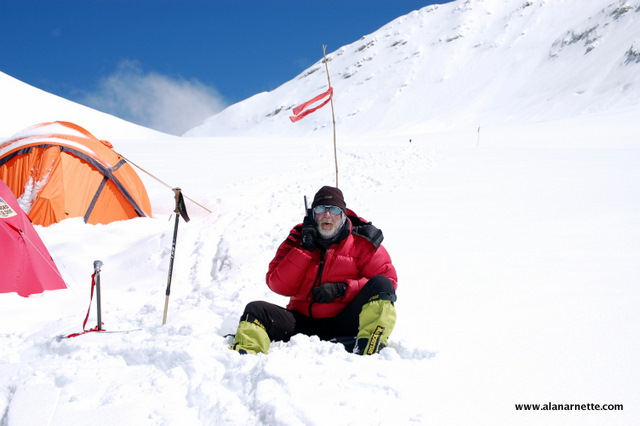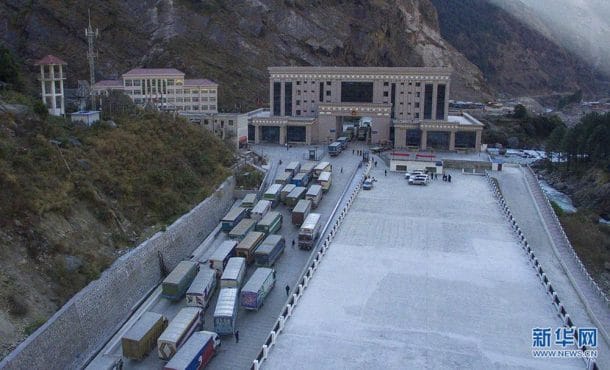I think the answer to “Can you hear me now?” will soon be “You are WHERE!” Well perhaps the summit of Mt. Everest this spring will be the answer from some climbers.
The Swedish company Teliasonera is investing over US$100M to expand 3G cell phone coverage throughout Nepal including the Khumbu region which is the gateway to Mt. Everest. The Nepali subsidiary is Ncell.
The most recent enhancement is a station at 17, no 000′ near Gorak Shep which is the last village a few hours walk from Everest Base Camp (17, 500′). There are nine stations in the Khumbu starting at Lukla.
This is not totally new; cell phone coverage has been available the past few years via Nepal Telecom. Many Sherpas have used the service to stay in touch with family while leading treks or climbs but the service did not provide the high-speed 3G data services.
The big news however, drugstore is that the support for data via computers is dramatically less expensive. Ncell is offering an amazing cost of 1 Nepali rupee per megabyte of data via their Connect card in a PC, Laptop or Mac computer. That is about one US penny, yes $0.01/MB. Compared to AT&T’s metered data plan for iPhone at $0.07 per MB, this is a bargain!
Also compared to $7/MB using a Bgan or about $1 a minute for a connection using a Thuraya or Iridium handheld sat phone running at less than .96 Kbps (100 times slower), the sat phone could be a threatened species; or maybe not.
However, one big question is capacity. According to an interview with Aigars Benders, the chief technical officer of Ncell published on CNN; the system is limited to 50 concurrent users and can reach maximum download speeds of 3.6 MB per second (Mbps). This is about the same as AT&T and Verizon offer on today’s networks in major US cities.
However, remember this is a maximum speed and your actual speed depends on several factors thus rarely delivering the maximum speed. Ncell says you may not see the maximum based on your location or because many users are using the internet in your area, so you may only see 2 Mbps, 1 Mbps or 384 kbps.
As a reference, Jamie McGuiness, expedition company owner living in Kathmandu, told me of his 3G experience on the Tibet side of Everest in 2010 with China Telecom’s temporary stations that at BC the maximum speed according to the installed software was quoted as 3.1 Mbps and they saw download speeds of up to a maximum of around 2Mbps, and would regularly come in at over 300Kbps.
The maximum number of concurrent connections is a bit troubling in that this is based on the number of stations available so to increase capacity means more stations, not easy or cheap in the mountainous Khumbu. They currently offer service in Lukla, Namche Bazar and Gorakshep with coverage to outlying areas within line of sight.
Another question is reliability. Benders is quoted as saying that four of the stations are run by solar power with a back-up battery that can power the stations for up to three days.
Jamie noted a power issue in Tibet when the service would often only start working in the morning when the sun was directly on the solar panels, and would slow down in the evening and then die. Hopefully this is not the case for Ncell with permanent stations installed.
Ncell also offers voice services on standard GMS phones. You can a prepaid SIM in Kathmandu and use your own phone. It is about US$0.08 per minute to call the US; US$0.21 to the UK or Australia. Compare this to AT&T International roaming plan at $3.49/min to the US.
A Fall 2010 Ama Dablam climber told me he got two bars at the top of the ridge above base camp; enough to make a call and text but the connection was “spotty”. Sherpas reported good connections from camp 2 around 20,ooo’.
So is this a replacement for Bgans, Thuraya and Iridium satellite phones used by every Everest expeditions for the past decade?
I think; yes, and no.
It is quite common to have 1000 people at Everest Base Camp between climbers, Sherpas and porters. This does not include the literally tens of thousands of trekkers enjoying the Khumbu each spring season, many of whom visit EBC as their ultimate destination. So it is quite feasible the system will be swamped with so many people trying to connect.
Benders is quoted as saying the system can be expanded if needed but I doubt they will make this investment immediately based on a two month window of heavy usage to accommodate all the traffic. He also says the speed can be upgraded to 7.2MB.
One item is that for practical purposes, cell phone connections are line of sight and you cannot see Gorak Shep from the Western Cwm, South Col or the Balcony. So dreams of using your Facebook app with geolocation on your iPhone throughout your climb, remains, just a dream. By the way, Apple does not sell or support the iPhone in Nepal, yet.
So will climbers really call from the summit? It is absolutely possible given the line of sight to the station. China Telecom has provided cell phone service on the Tibet side of Everest since 2008 and many climbers have phoned home from the summit. The new Ncell system has been tested near EBC with a video call but not higher.
While this is excellent news, it comes with a few risks. First up is the ability of someone to announce an accident or a death before the family is notified. It has happened before creating incredible angst, sometimes unnecessarily, since information from expeditions is often rumor based. Then there is the concern that climbers take risks they normally would not based on the falsehood that if they get in trouble, help is just a phone call away.
Now these same concerns have been around since the days of modern communication but in the hypersensitive environment of Everest, every concern takes on new magnitudes and impacts many people, not just one individual.
I think the real winners here are not climbers, but the people of Nepal. They have long lived many decades behind the rest of the world. While sometimes a blessing, in cases of emergencies or just staying in touch with their families, this is a major advancement.
I will be climbing Everest the spring of 2011 and what will I use? The simple answer is all of the above.
Climb On!
Alan





One thought on “Will 3G Cell Phones Replace Sat Phones on Everest?”
Hi Alan,
You are correct about the line of sight from Gorak Shep. With the advent of the 2G signal in 2010, I was unable to get cellphone coverage at Camps 1 and 2. I did get a smidgeon of a signal at Camp 3. At Camp 4 as you can imagine, I could actually see the Chinese operators in my settings but couldnt connect.
Comments are closed.